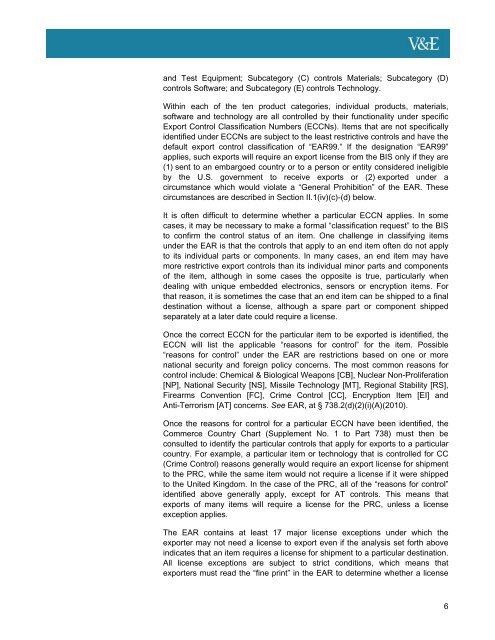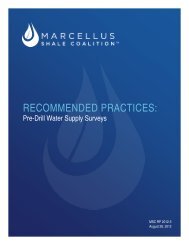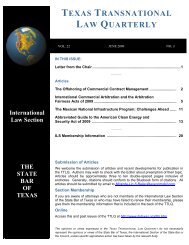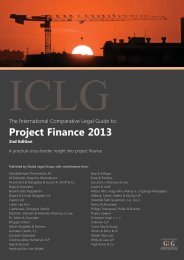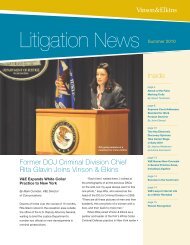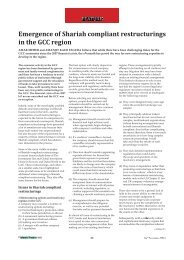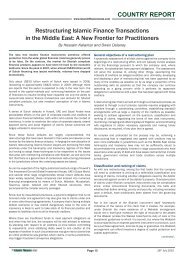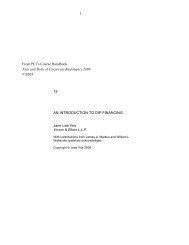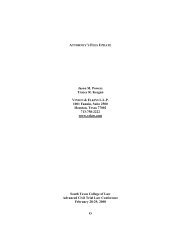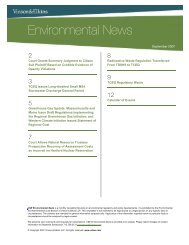Overview of U.S. Export Controls and Sanctions Issues Relating to ...
Overview of U.S. Export Controls and Sanctions Issues Relating to ...
Overview of U.S. Export Controls and Sanctions Issues Relating to ...
Create successful ePaper yourself
Turn your PDF publications into a flip-book with our unique Google optimized e-Paper software.
<strong>and</strong> Test Equipment; Subcategory (C) controls Materials; Subcategory (D)<br />
controls S<strong>of</strong>tware; <strong>and</strong> Subcategory (E) controls Technology.<br />
Within each <strong>of</strong> the ten product categories, individual products, materials,<br />
s<strong>of</strong>tware <strong>and</strong> technology are all controlled by their functionality under specific<br />
<strong>Export</strong> Control Classification Numbers (ECCNs). Items that are not specifically<br />
identified under ECCNs are subject <strong>to</strong> the least restrictive controls <strong>and</strong> have the<br />
default export control classification <strong>of</strong> “EAR99.” If the designation “EAR99”<br />
applies, such exports will require an export license from the BIS only if they are<br />
(1) sent <strong>to</strong> an embargoed country or <strong>to</strong> a person or entity considered ineligible<br />
by the U.S. government <strong>to</strong> receive exports or (2) exported under a<br />
circumstance which would violate a “General Prohibition” <strong>of</strong> the EAR. These<br />
circumstances are described in Section II.1(iv)(c)-(d) below.<br />
It is <strong>of</strong>ten difficult <strong>to</strong> determine whether a particular ECCN applies. In some<br />
cases, it may be necessary <strong>to</strong> make a formal “classification request” <strong>to</strong> the BIS<br />
<strong>to</strong> confirm the control status <strong>of</strong> an item. One challenge in classifying items<br />
under the EAR is that the controls that apply <strong>to</strong> an end item <strong>of</strong>ten do not apply<br />
<strong>to</strong> its individual parts or components. In many cases, an end item may have<br />
more restrictive export controls than its individual minor parts <strong>and</strong> components<br />
<strong>of</strong> the item, although in some cases the opposite is true, particularly when<br />
dealing with unique embedded electronics, sensors or encryption items. For<br />
that reason, it is sometimes the case that an end item can be shipped <strong>to</strong> a final<br />
destination without a license, although a spare part or component shipped<br />
separately at a later date could require a license.<br />
Once the correct ECCN for the particular item <strong>to</strong> be exported is identified, the<br />
ECCN will list the applicable “reasons for control” for the item. Possible<br />
“reasons for control” under the EAR are restrictions based on one or more<br />
national security <strong>and</strong> foreign policy concerns. The most common reasons for<br />
control include: Chemical & Biological Weapons [CB], Nuclear Non-Proliferation<br />
[NP], National Security [NS], Missile Technology [MT], Regional Stability [RS],<br />
Firearms Convention [FC], Crime Control [CC], Encryption Item [EI] <strong>and</strong><br />
Anti-Terrorism [AT] concerns. See EAR, at § 738.2(d)(2)(i)(A)(2010).<br />
Once the reasons for control for a particular ECCN have been identified, the<br />
Commerce Country Chart (Supplement No. 1 <strong>to</strong> Part 738) must then be<br />
consulted <strong>to</strong> identify the particular controls that apply for exports <strong>to</strong> a particular<br />
country. For example, a particular item or technology that is controlled for CC<br />
(Crime Control) reasons generally would require an export license for shipment<br />
<strong>to</strong> the PRC, while the same item would not require a license if it were shipped<br />
<strong>to</strong> the United Kingdom. In the case <strong>of</strong> the PRC, all <strong>of</strong> the “reasons for control”<br />
identified above generally apply, except for AT controls. This means that<br />
exports <strong>of</strong> many items will require a license for the PRC, unless a license<br />
exception applies.<br />
The EAR contains at least 17 major license exceptions under which the<br />
exporter may not need a license <strong>to</strong> export even if the analysis set forth above<br />
indicates that an item requires a license for shipment <strong>to</strong> a particular destination.<br />
All license exceptions are subject <strong>to</strong> strict conditions, which means that<br />
exporters must read the “fine print” in the EAR <strong>to</strong> determine whether a license<br />
6


